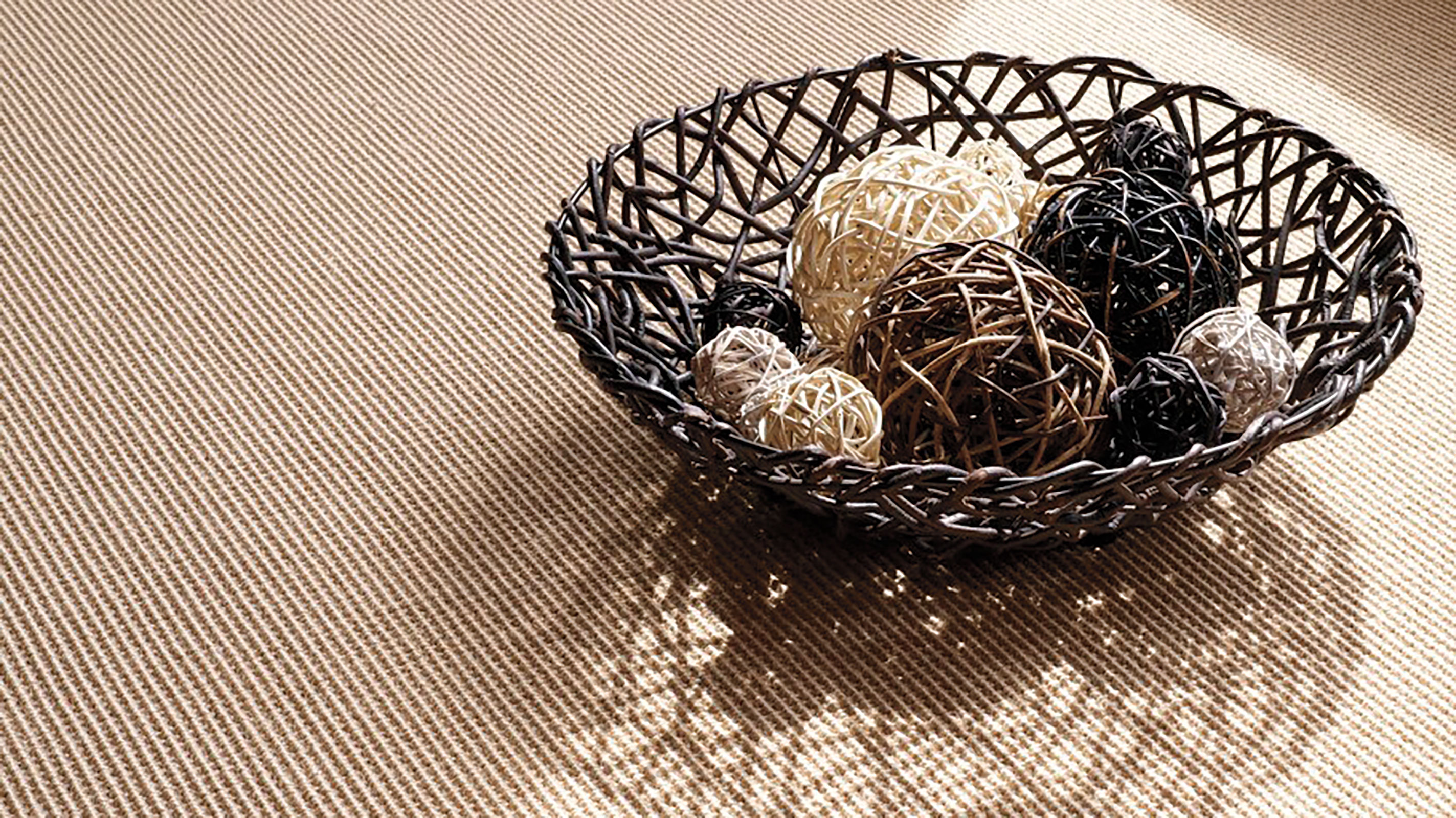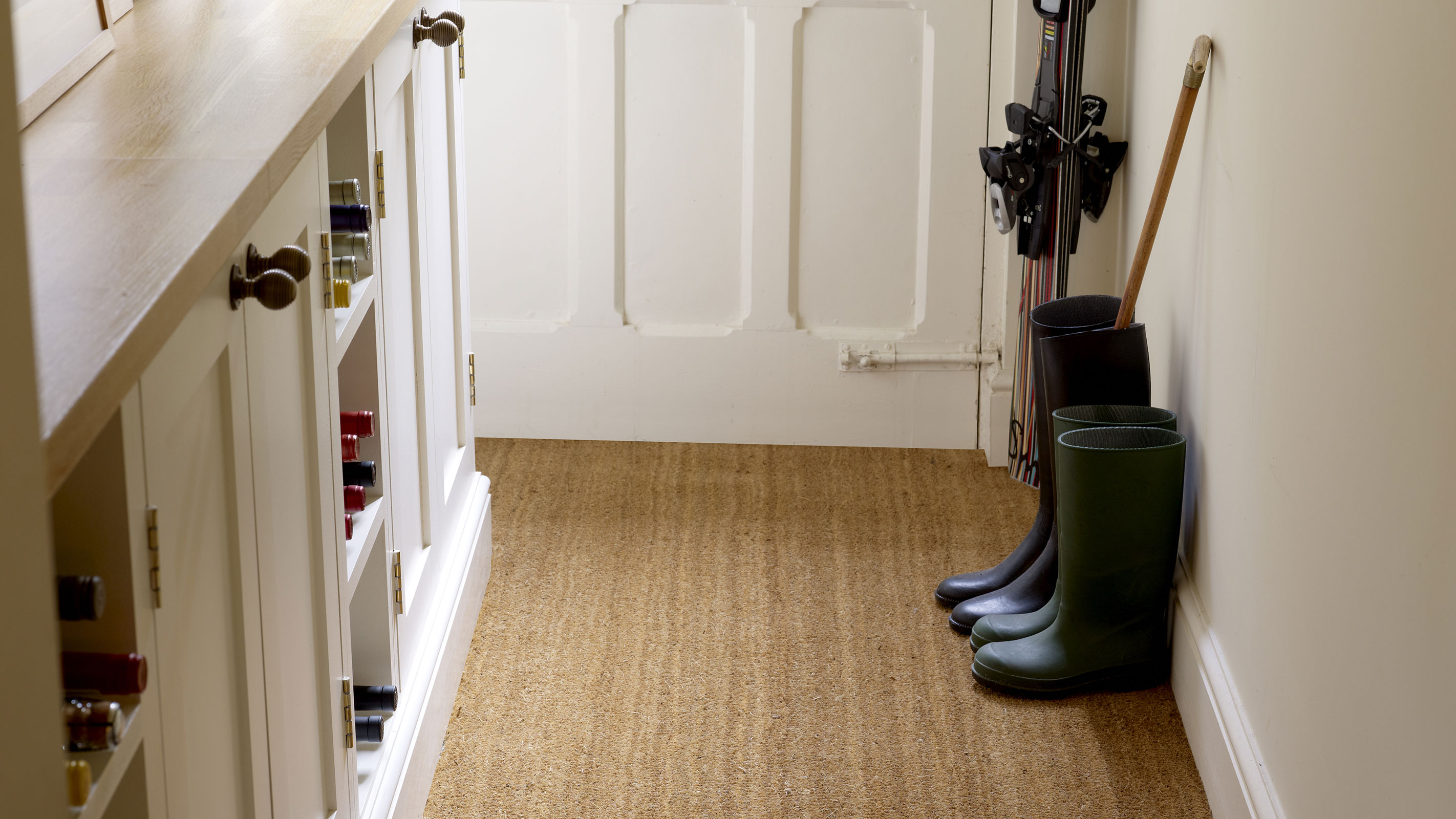Natural carpets: What are your options?
Natural carpets are a beautiful and eco-friendly flooring choice and can work in pretty much any room of the house — we explain all the options

Natural carpets are becoming an increasingly popular choice thanks not only to their good looks, but also due to the fact that they are free from potentially harmful chemicals and kinder to the planet than many synthetic types of flooring.
Natural carpet can be made from several different materials found in nature and the term is basically applied to types of carpet that do not contain any man-made products, such as nylon or polypropylene.
In this article we take a look at the various options that will be available to you should you decide to take the all-natural route when it comes to finding flooring for your home, explaining the pros and cons of each.
What types of natural carpet are there?
There are many different types of carpet available, all offering different benefits. Some will be more suitable for certain rooms of the house than others and prices can vary quite widely between the different materials out there too.
"Carpets are not just made from synthetic fibres or wool — jute, sisal, seagrass and coir all make sustainable, allergy-friendly and hardwearing floor coverings," explains Homebuilding & Renovating's editor-in-chief Claire Lloyd.
"We’ve seen an increase in popularity for natural carpets in recent years as homeowners are looking to make more sustainable choices," says Alex Heslop, trend expert at Flooring Superstore. “As well as having a lower carbon footprint, natural carpets add a premium and calming feel to your living space and as a natural fibre, can even improve air quality, acting as a natural filter by trapping allergens and removing them from the air you’re breathing."
If you like the idea of taking a green approach to your flooring, what options will you be faced with?
In general, the main types of natural carpet are:
- Jute
- Coir
- Sisal
- Wool
- Seagrass
1. Jute Flooring
As one of the cheapest types of natural carpet, Jute is highly popular.
Jute is woven from the fibres of plants from the Corchorus genus. It is made by soaking the plant in water and stripping its stalks to make individual fibres.
"Jute is the softest of the natural floor coverings, giving a comfortable feel underfoot," says Alex Heslop.
"Jute is soft underfoot for sitting rooms and bedrooms and it is a great base for layering rugs on top." agrees Lorna Haigh, creative director at Alternative Flooring.
Jute's softness comes from the fact that it is made from plant stalks as opposed to the leaves.
However, on the downside, it tends not to be best suited to areas of high traffic, such as hallways and stairs — it is better in bedrooms and snugs.
"It is less hardwearing and more absorbent than some other natural carpets," explains Sarah Jenkinson, product manager at Kingsmead.

2. Coir flooring
Coir is a really hardwearing, tough material that is ideal for high traffic areas of the home such as hallways, boot rooms and even porches. It tends not to be used as frequently in spaces where softness underfoot is a high priority, such as for living room flooring ideas or in bedrooms.
"Coir is a suitable for those seeking a rougher, more casual effect," explains Sarah Jenkinson.
Coir is made using fibres from coconut husks and tends to be a rich nutty shade of beige. Although it is often used for doormats, coir is also very suitable for flooring and looks great in rustic, country-style homes — plus it is brilliant at absorbing sound so works well in open plan areas.

3. Sisal flooring
Sisal is an incredibly popular choice for those after a natural carpet. It comes from a tropical agave plant (called, unsurprisingly, Sisal). Plant fibres are twisted together to form a beautiful textured finish in easy-to-live with golden, neutral shades.
"Sisal is the most popular natural fibre option for medium domestic carpets because it’s so versatile," says Lorna Haigh of Alternative Flooring. "Super hardwearing, it is available in an array of weaves and natural shades. As sisal is expertly woven in different strand shades is often has a darker fleck in the carpet. Dark flecks hide a multitude of sins especially tracked dirt in hallways and on stairs, so it is ideal in high-traffic spaces in the home. Sisal can be woven into many types of weaves in varying thicknesses."
Another benefit of sisal is that it feels soft underfoot and really suits contemporary interiors just as well as more classic schemes.
"Sisal features smooth fibres offering a crisp and defined touch to any space," says Alex Heslop.
Sisal is also often mixed with other materials, such as wool. Woosie, from Alternative Flooring is one of these.
"Woosie is a wool sisal mixing the best qualities of two natural fibres that are firm favourites in interiors," explains Lorna Haigh. "The woollen yarn gives the soft feel while the hardwearing sisal adds rustic texture and lustrous shades. Sisal in its raw form is very white but dyes well."
Being so strong and durable, sisal carpet is perfect for high-traffic areas, such as the hallway, landing and stairs.

4. Wool flooring
“Wool is the most popular natural carpet and it’s easy to see why as it provides a textured luxurious look which is soft underfoot as well as being hardwearing — making it a great option for almost any room," says Alex Heslop. "It is also the perfect material for experimenting with interesting textures to add that little something extra to your space, with so many different finishes to choose from including looped, herringbone and berber.”
"Wool floorcoverings are ideal for living rooms as they are hardwearing and soft underfoot," says Sarah Jenkinson. "As a natural fibre, wool is also breathable and it will be warm in the winter but remain cool in the summer."
"Wool is a wonder fibre: natural, renewable, easily cleaned and it retains its shape and bounce," says Lorna Haigh. "An insulator and naturally flame retardant, it is a super textile for floors which lasts too. Deep pile luxurious wool carpets are indulgent for bedroom flooring ideas and upstairs but may not perform well in an area with heavy foot fall."
“A wool carpet is a wonderful choice for a living room because wool has a textured design adding depth and subtle visual interest to the floor, always a great look for any stylish living room," says "Alexandra Hindle from Cormar Carpets. "With sustainability at the forefront in 2023, using products that are less harmful to the environment is always a great idea. Carpets crafted from natural, renewable materials such as wool are a perfect choice. Wool is a fabulous fibre, natural, renewable, high quality and luxurious underfoot."

5. Seagrass flooring
Seagrass is a really beautiful flooring choice with a breezy, organic finish that is often woven into chunky patterns.
As its name suggests, seagrass grows in the shallows of the sea and as such has good water resistance — making it ideal for rooms where spills are likely to occur or water might come in on wet shoes. Anyone after hallway flooring ideas or a good choice for boot rooms or utility rooms should seriously consider seagrass.
Despite its many benefits, seagrass is not suitable for every room as it tends not to be as hardwearing as some other natural flooring materials.
"Seagrass can be used in the lounge, bedroom and dining room but not on stairs," advises Lorna Haigh.

Is natural flooring suitable in bathrooms?
How about those choosing bathroom flooring — is natural flooring a viable option?
"Natural fibre floorings do not like water, and we suggest dry cleaning methods. We would always suggest having one of our Natural Flooring Care Kits to hand," says Lorna Haigh. "Faux fibres are used in Alternative Flooring's Anywhere synthetic sisal-style range. These are low pile height floor coverings and can be very practical for high foot fall but are a great solution for bathrooms and kitchens as well as outdoors.”
Get the Homebuilding & Renovating Newsletter
Bring your dream home to life with expert advice, how to guides and design inspiration. Sign up for our newsletter and get two free tickets to a Homebuilding & Renovating Show near you.
Natasha was Homebuilding & Renovating’s Associate Content Editor and was a member of the Homebuilding team for over two decades. In her role on Homebuilding & Renovating she imparted her knowledge on a wide range of renovation topics, from window condensation to renovating bathrooms, to removing walls and adding an extension. She continues to write for Homebuilding on these topics, and more. An experienced journalist and renovation expert, she also writes for a number of other homes titles, including Homes & Gardens and Ideal Homes. Over the years Natasha has renovated and carried out a side extension to a Victorian terrace. She is currently living in the rural Edwardian cottage she renovated and extended on a largely DIY basis, living on site for the duration of the project.

